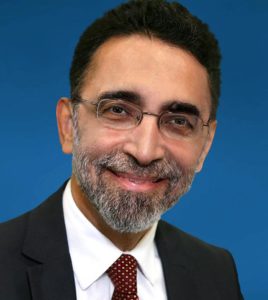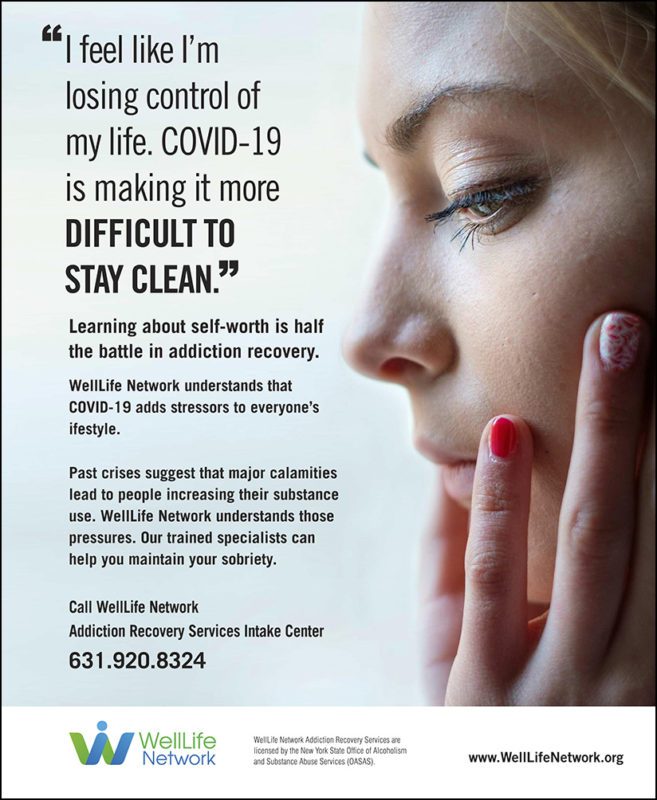Socioemotional challenges and crises are felt across the full spectrum of the population, not sparing any ethnic, racial, nationality, or age group. The personal and interpersonal consequences have been far-reaching in this current environment for both those with prior vulnerabilities and emotional challenges, as well as those with no prior noticeable or significant psychological hardship. It appears that everyone is affected to different degrees. Life as we knew it has been put on hold and is hostage to A VIRUS, an entity that is one micron thick. Everyone has made sacrifices and adjustments trying to cope, perhaps looking forward to a NEW NORMAL eventually emerging. These are unprecedented times for us all, and the uncertainty can be overwhelming.

Max Banilivy, PhD
Increased anxiety, despair, profound losses, isolation, loneliness, and overall much more stress and sense of uncertainty about the future are among the many factors having compromised our individual and collective sense of safety. These unusual global pressures have significantly contributed to the need for socioemotional support for millions of individuals and families with a notable increase in calls to hotlines and profound increases in uses of psychotropic medications, family discord, including domestic violence, economic constraints, the potential for substance abuse and many other unhealthy and self-destructive behaviors. Fear, stress, and uncertainty beg for all to try to establish a new sense of safety and balance and equilibrium.
It is difficult always to predict who gets more challenged with despair, depression, anxiety, and hopelessness/helplessness. Uncertainty and constant fear and worries wear down many defenses and coping skills. We need to be particularly concerned and vigilant about the plight/adjustment of those emotionally vulnerable needing more support and those with a history of suicidal thinking or attempts. Anyone may be at risk of suicidal thinking, given the gravity of the impact of COVID-19 on everyone’s life and sense of safety and profound changes in terms of life as we knew it.
Given the known vulnerable groups and the unexpected increased risk in the general population, every individual and organization needs to be sensitive and prepared to attend to the needs of the adults and youth in this regard. Tragically, the number of people who have killed themselves or attempted suicide had already been increasing in society before the current global crisis. Already existing economic and other challenges resulting in increased hopelessness that is now further compounded coupled with the many losses of lives due to COVID-19 may contribute to an even more significant number.
What Can We Do to Prevent Suicide?
We know that the thoughts of suicide are not unusual and may cross many people’s minds in harder times. Suicide is one of the more preventable causes of death. Although all suicides cannot be prevented, most can, as most people who may think about it, have some part of them that has not given up on life/living. In order for almost everyone in society to be able to be a helper, we need to continue to address stigma, biases, and myths associated with mental illness and suicide.
Education is essential. Almost everyone thinking about suicide is looking to be approached and open a discussion as to why they contemplate thoughts of suicide. Anyone can think about suicide. Many individuals work themselves out of it, and others take further steps. Individuals preoccupied with thoughts of suicide must know that they can share their thoughts and talk about it. Above all, they must be aware there are caring individuals in the community or their personal, social, and workplace who will listen. Necessary helping steps are simple, and anyone can learn them.
What Are Young and Old Looking for From Us?
Here are some basic concepts related to the three areas of prevention, intervention, and postvention for all individuals and organizations to keep in mind.
Prevention: Open lines of communication and messages about suicide. These messages need to convey that help is available. Messages should also communicate accessible resources and that many helpers are ready, willing, and able to discuss their concerns in a non-stigmatizing manner.
Intervention: The community of providers and laypeople do not need to be behavioral health professionals to learn intervention skills. Learning how to talk with someone with suicidal thoughts is a communication skill that is readily available and can be learned by anyone, including youth. Intervention skills are available through trainings and education. Any individual and members of any organization can learn to provide access, support, and create a suicide-safer working environment. This “first effort crisis assistance” helps individuals with suicidal ideations to keep themselves safe for now until other help can be engaged, if necessary. This is learned through suicide first aid skills
Postvention: Similarly, any community agency/organization must be prepared to address and know what needs to be done after a tragic loss due to suicide. Two basic concepts to take into account in order to be sensitive to the needs of the community. One is to assist with grieving and healing. We have to know and learn about all who may have been affected. The second is to always engage in safe messaging and providing factual information and education – knowing that many at-risk are listening and watching how others talk about and think of the person killing himself/herself and their action. It is important to emphasize that help is available, and many crises do pass. How we handle a tragic loss to suicide has an impact on the future.
Postvention is Prevention
Setting the foundation to develop a caring and suicide safer environment is everyone’s concern. There are best practices education and training readily available to all members of the community, regardless of age and background.
A significant percentage of youth and adults think about suicide due to stress, hardship, or personal challenges. It is important to note that the vast majority of individuals at risk for suicide do not kill themselves. Having members of the community that are available with necessary skills goes a long way to SAVE LIVES. Today we need to be even more sensitive and ready.
Let us all work together to reduce stigma against mental illness and those thinking about suicide in particular. Please contact WellLife Network – Dr. Max Banilivy at Max.Banilivy@WellLifeNetwork.org to discuss training and resources. Let us focus on how you can work toward creating a safe and more receptive workplace for those with the thought of suicide and how to be more comfortable approaching others about their thoughts. This is a critical area we cannot lose sight of and we must acknowledge and utilize resources available to help ourselves, our loved ones and anyone else including our staff we are worried about.
“If You are concerned about someone, ask them if they have thoughts of suicide. You will be surprised how many say Yes and will be grateful that you asked.”
The following numbers and websites among others to national and local crisis hotlines and resources should be readily visible and available to everyone:
- National Suicide Prevention Lifeline – 1 (800) 273-TALK
- Long Island Crisis Center – (516) 679-1111
- Response Crisis Center – (631) 751-7500
- The Suicide Prevention Center of New York
- The Suicide Prevention Coalition of Long Island
- American Foundation for Suicide Prevention
- Suicide Prevention Resource Center
- New York City Mental Health Hotline: 1-888-NYC-WELL (1-888-692-9355)





